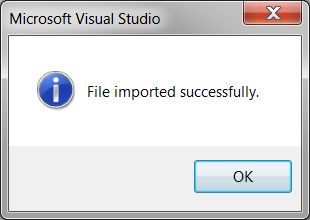Connecting EtherNet/IP™ slaves
An EtherNet/IP™ slave can be integrated as a Generic Node with EDS (Electronic Data Sheet), or without an EDS file. Not all EtherNet/IP™ slaves currently available on the market are supported. It should be possible to integrate EtherNet/IP™ devices that are delivered with an EDS file via the EDS import, provided they are supported by the TF6281. If this is not the case, you can send the EDS file to Beckhoff Support for verification.
If the EDS file can be integrated without errors, communication to the slave should be possible. If you use a slave that can only be integrated via the Generic Node (i.e. without an EDS file), it is to be assumed that it should also be usable.
The following slaves cannot be used:
- Slaves that use CIP Sync, CIP Motion or CIP Safety
- Slaves with modular EDS file
Integrating EtherNet/IP™ slave without EDS file
Slaves that do not use an EDS file, or for which the manufacturer does not provide an EDS file, are integrated via a Generic Node. The following manufacturer information is required for this purpose:
- IP address of the slave
- Maximum RPI time, i.e. the maximum or minimum time with which the slave can work
- The Assembly Instance Number for Config, Input and Output data and their length
- Description of the data
Add a Generic Node under the EtherNet/IP™ scanner. As long as you have not specified an IP address, the symbol is identified by a warning and question mark  . Enter the IP address under Settings.
. Enter the IP address under Settings.

An "IO Connection" must first be created under the node. This IO Connection contains the inputs and outputs, which can now be created. The variable type is freely selectable, only the size has to match.

Furthermore, the EtherNet/IP™ specific entries have to be made now.

It is sufficient to specify the values for Config Instance and Config Size. The Connection Points must be created for the inputs and outputs.
The data length results from the length you created earlier, which you can check again in this dialog.
Cycle Time Multiplier
With EtherNet/IP™ it is allowed to operate the adapters (slaves) with a different cycle time. You can set this individually with the Cycle Time Multiplier.
The created Sync Task (-> see Sync Task) specifies the basic cycle time, with which the EtherNet/IP™ Master is operated.
The Cycle Time Multiplier is in this case a multiplier of the cycle time in accordance with the inputs or outputs.
The Timeout Multiplier is in turn based on the multiplier of the Cycle Time Multiplier.
Example: If the Sync Task is set to 2 ms and the Cycle Time Multiplier is set to 10, the slave is operated with 20 ms. If the connection is interrupted here and the Timeout Multiplier is set to 4, the system detects this after 80 ms (20 ms * 4 = 80 ms).
Integration of EtherNet/IP™ slave with EDS file
TwinCAT offers the option of integrating EDS files. The Import EDS File dialog is used for this purpose.

The files are checked and copied to the directory \TwinCAT\3.1\Config\Io\EtherNetIP after successful import.

EDS files must have an IO Connection, otherwise this error message appears: 
These types of devices are not supported by the TF6871 EtherNet/IP™ scanner.
For EDS files that support symbols, the symbolism is ignored. The symbolism is therefore not available:
After you have created the slave, the Connection must be added. Only the Connections described in the EDS file are displayed. Only one Connection is allowed.